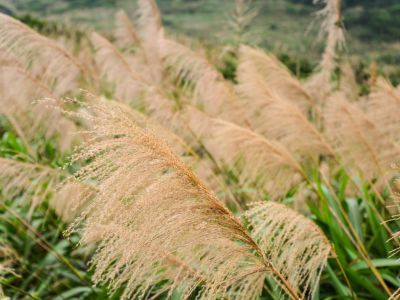Ornamental Japanese Silver Grass Uses
Japanese silver grass (Miscanthus sinensis) is useful as a living hedge or border when planted 3 to 4 feet (1 m.) apart. It also makes an interesting specimen plant alone as the center of a bed or in a large pot as an accent. The ornamental Japanese silver grass group contains numerous cultivars. Autumn Light and November Sunset are two varieties that may be grown in USDA zone 4. Some other interesting varieties are:
Adagio Blondo Dixieland Flamingo Kaskade Little Nicky Malepartus Puenktchen Variegatus
The latter has foliage striped with a silver-white color.
Growing Japanese Silver Grass
The plant can get 3 to 6 feet (1-2 m.) in height and has thick, rather coarse foliage. The blades are long and arcing and stay close in a tight clump. In fall it produces reddish color and the inflorescence persists, creating an attractive seasonal display. Growing Japanese silver grass requires no special soil type but it does need a fertile, moist planting area. Japanese silver grass can become invasive in the southern states. The inflorescence becomes fluffy seeds that spread on the wind when they are ripe. The seeds readily sprout and produce numerous seedlings. To avoid this tendency, it is best to remove the flower before it seeds in warmer zones. This ornamental grass performs best when positioned in full sun. While it needs moist soil, it will tolerate drought periods after it is fully established. The grass should be cut back in spring before new shoots appear. Japanese silver grass plant is a perennial but the leaves will become brown and dry in winter as it assumes a dormant habit. Japanese silver grass care is easy, as the plant has no special requirements and few pests or disease issues.
Propagation of Japanese Silver Grass Plant
Ornamental Japanese silver grass will spread to 4 feet (1 m.) in diameter. When the center begins to die out and the plant is no longer looking full and healthy, it is time to divide it. Division takes place in spring. Simply dig up the plant and use a root saw or sharp spade or knife to cut the plant into sections. Each section needs a good clump of roots and foliage. Replant the sections to create new plants.
